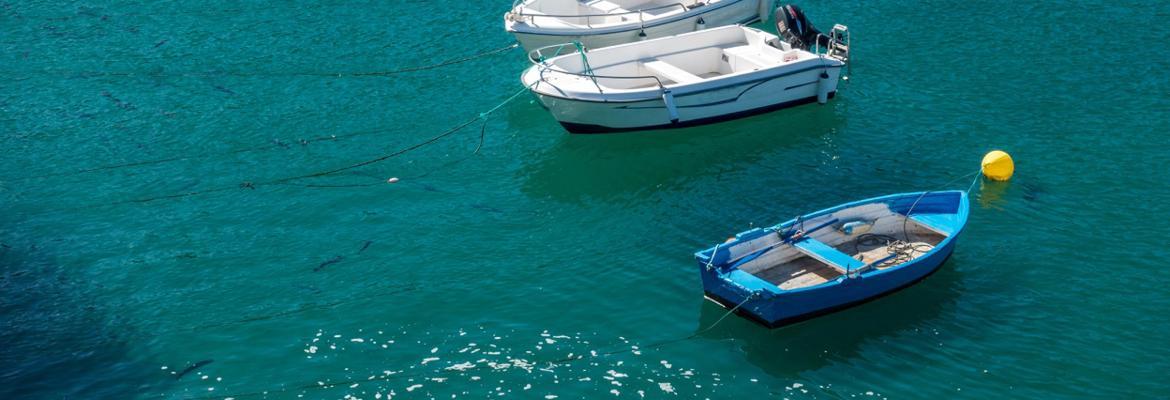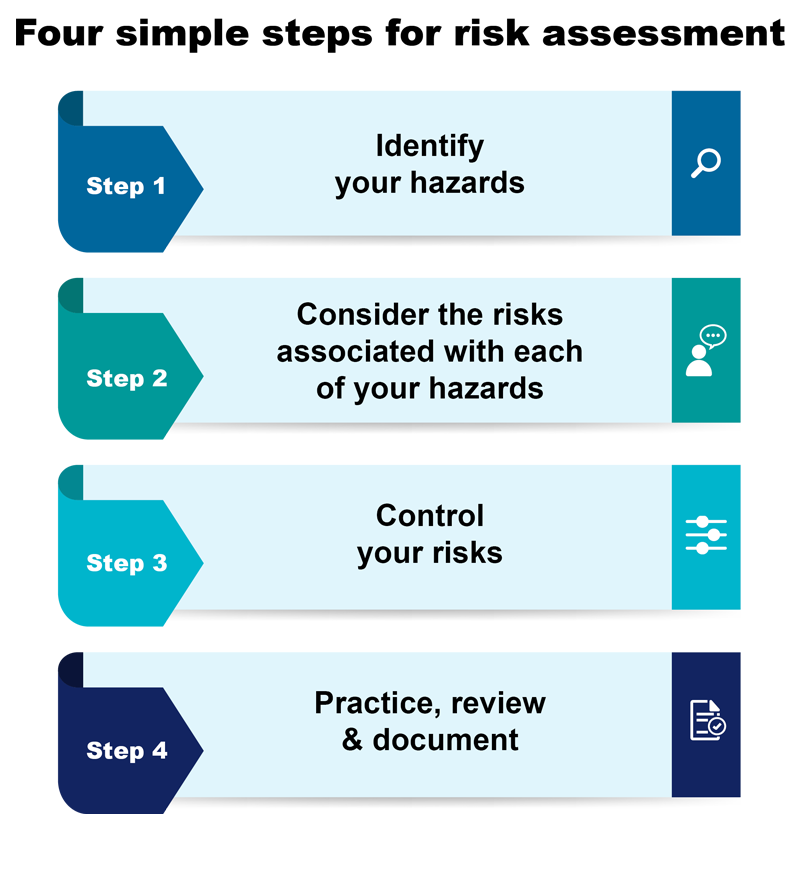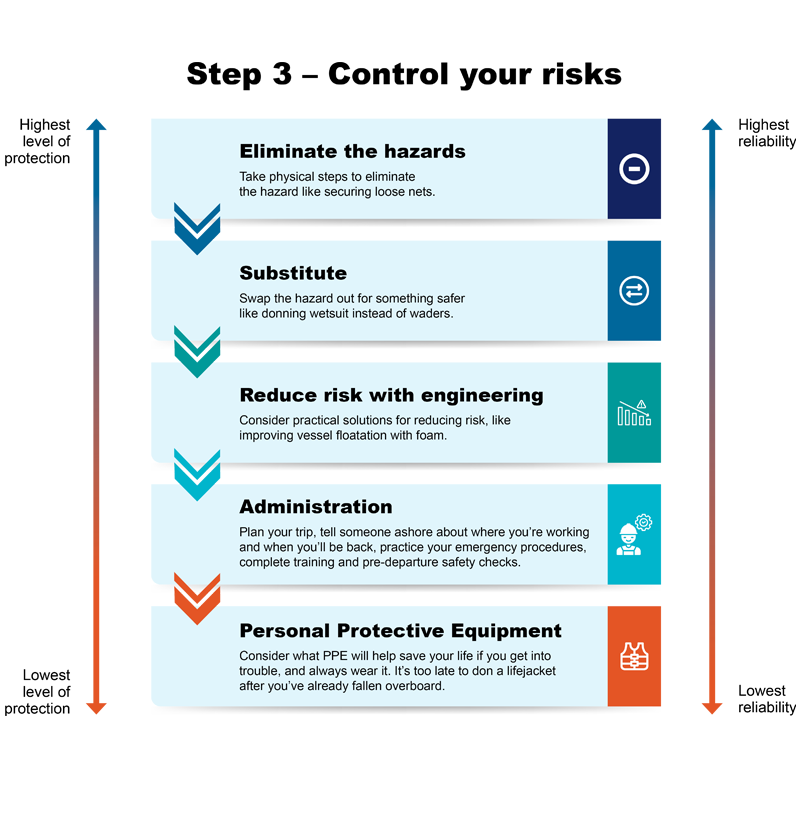
Published on Australian Maritime Safety Authority (https://www.amsa.gov.au)

On 1 June 2025, we are introducing new requirements for safety management systems (SMS).
These changes affect all domestic commercial vessels. Find out what you need to do.
We are also introducing simplified SMS requirements for smaller, less complex vessels. Check if your vessel is eligible.
These guidelines recognise the need for a different risk assessment approach for smaller operations when compared to larger more complex operations noting that smaller operations need to address different hazards.
For larger operations with possibly more people on board a vessel and more equipment, there is an additional level of risk complexity to that operation. For operations other than small DCVs refer to AMSA’s Practical Guide to Risk Management for Domestic Commercial Vessel Operations.
To start your journey on undertaking a risk assessment you should consider the following questions in relation to your operations:
Answering these 6 questions will help you get into the right frame of mind to identify the hazards and risks associated with your small DCV operations, and then implement appropriate controls to eliminate or reduce those risks.

“…a hazard has the potential to cause death, personal injury, and illness.”
In identifying hazards, it will be useful to think about the ‘types of operations’ being undertaken onboard the vessel – for example, a commercial fisher might have different hazards to consider when catching garfish, than when fishing for crabs.
As an example, some hazards to consider when fishing for garfish might be fishing at night or working with a net – similarly, hazards when fishing for crabs might be operating long distances from shore or hauling heavy pots.
Some hazards are more general in nature across all ‘types of operation’, such as:
To identify hazards specific to your vessel’s operation it is recommended to consider your ‘types of operation’ and for each identified hazard, think about what could go wrong and how it could potentially endanger your life or that of the crew.
Discuss your hazards openly with your crew, family and friends - those who care most for your safety are generally the ones who will be most impacted if you weren’t to return home.
It is encouraged to discuss your work experiences with other small DCV operators who are likely to be conducting similar operations and are considering similar hazards in their risk assessment – you might find that a group discussion raises hazards that you hadn’t considered.
Risks come about from working within a hazardous environment, which may have a negative impact on your safety.
Now that you have identified hazards for each of your ‘types of operation’, begin to consider some of the risks associated with each one. Using the previous example of fishing for garfish, some of the risks associated with the hazards of this operation, being fishing at night, or working with a net, might be drowning or entanglement – and in fishing for crabs, some of the risks associated with the hazards of operating long distances from shore or hauling heavy pots might be drowning or serious injury.
At this point, it is good practice to record your hazards and risks, alongside each of your ‘types of operation’. For example:
| Types of Operation | Hazards | Risks |
| Fishing for garfish | Fishing at night | Drowning |
Effective controls assist in managing the risks bought about by a hazard.
Now that you’ve identified your hazards and the risks associated with those hazards, you can begin to select a series of ‘actions’ or ‘controls’ to manage your hazards and risks.
Below is a ranking of measures that you should consider when applying your risk controls.
You should always try and eliminate the risk, which is the most effective control.
If this is not reasonably achievable, you should try and minimise the risk by working through the other alternatives in the order below. Administrative controls and Personal Protective Equipment are the least effective at reducing risk, however, they are often the most achievable, so must be maintained.
You must consider lifejacket wear when you develop and review your risk assessment.

Documenting your risk assessment (see Table 1) will assist in your daily operations and can act as a checklist prior to embarking.
Practice makes perfect and your safety deserves time for you to practice the work that you’ve put into this risk assessment.
The risk assessment is a working document and should be reviewed annually and after any incident or near miss.
Some questions to consider when reviewing and practicing your controls:
| Types of Operation | Hazards | Risks | Controls |
| Fishing for garfish | Fishing at night
| Drowning |
|
| Working with a net | Entanglement |
| |
| Fishing for crabs | Long distance from shore | Drowning |
|
| Hauling heavy pots | injury |
| |
| Across all operations | Changing weather & sea state | Capsizing |
|
| Overloading | Sinking |
| |
| Mechanical breakdown | Disable/Drifting |
|
Some examples of risk controls to address the hazard of weather. Some of these controls reduce the likelihood of weather hazards, some reduce the consequences, and some do both.
____________________________________________________________
1 For the purpose of these guidelines, a small domestic commercial vessel (DCV) operation includes vessels less than 7.5m in length undertaking class 2, 3, or 4 operations; and not carrying passengers. Typically crewed with one or two crewmembers.